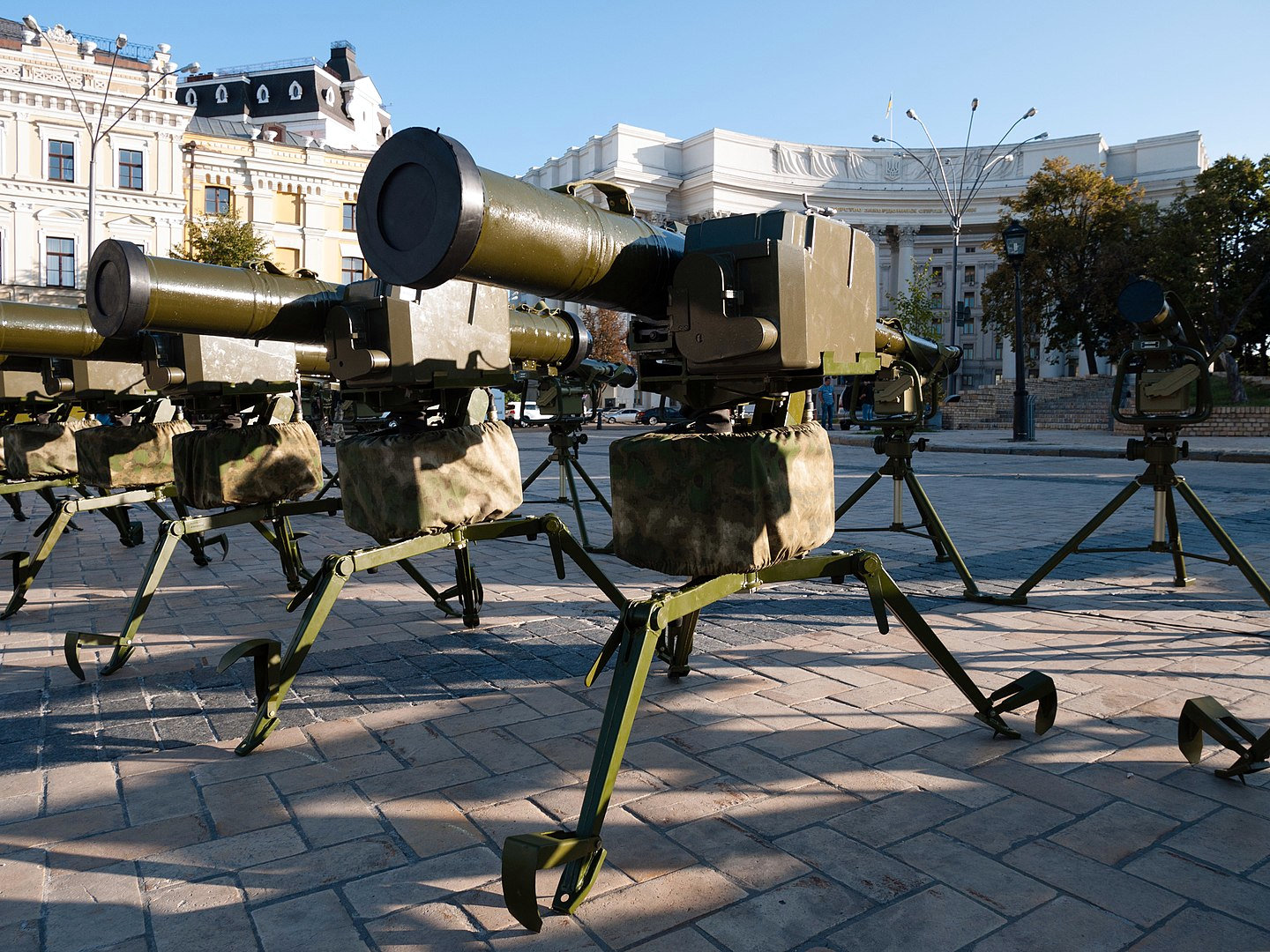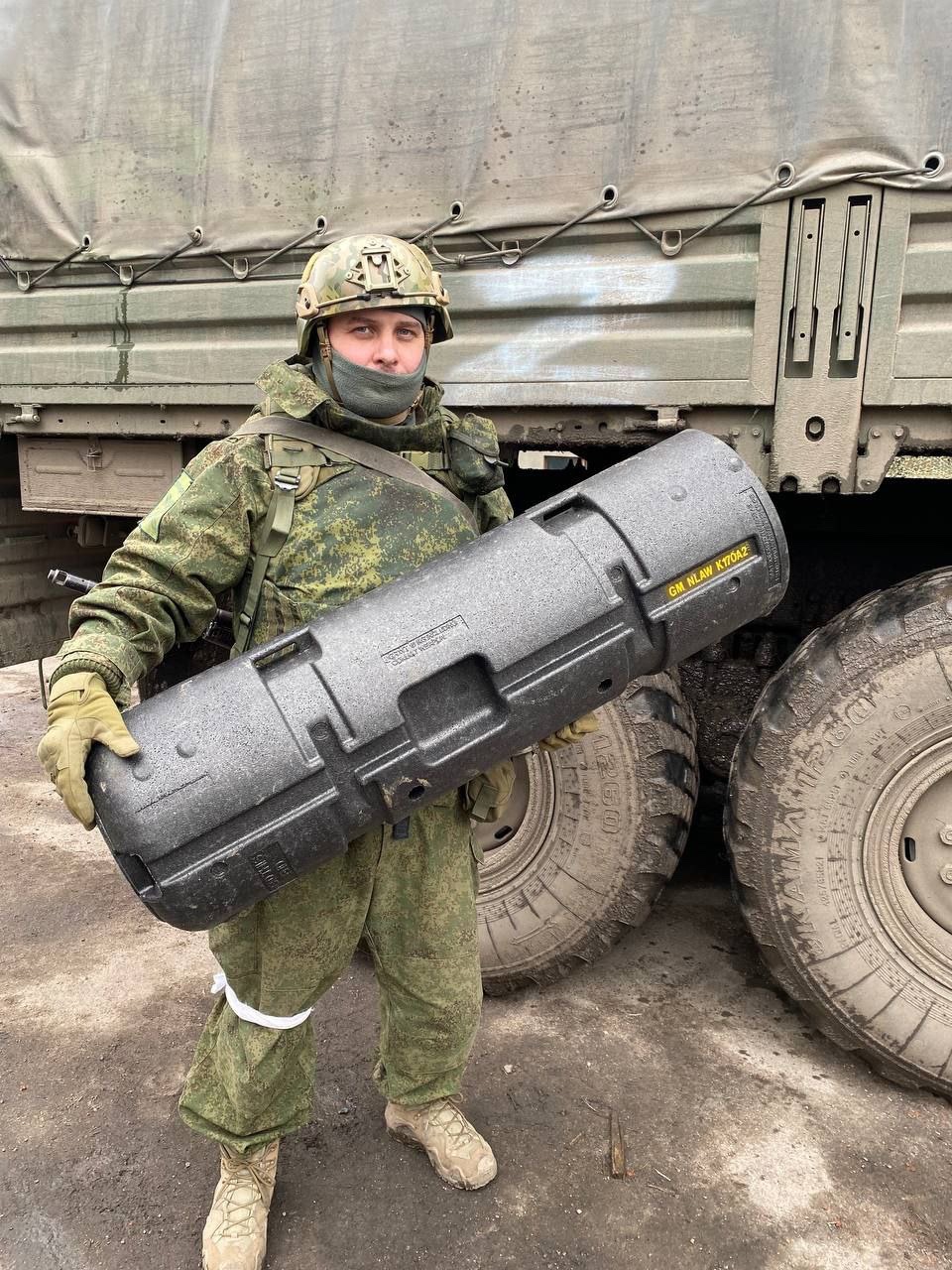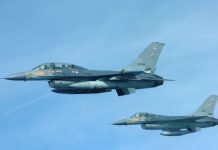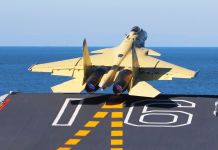Russia has said that it will radically reduce military activities in Ukraine after more than a month of heavy fighting. The Ukrainian military, facing off with a force much bigger and more advanced than its own, has extensively employed anti-tank guided missiles and man-portable air defense systems against Russian tanks.
Anti-tank guided missiles (ATGMs) are large, tripod — or vehicle-mounted weapons capable of destroying heavily armored main battle tanks from a distance of over a mile. These weapon systems have given stiff resistance to the heavily mechanized Russian military.
Ukraine’s military has received anti-tank guided missiles in thousands from several countries. However, Ukraine is using a home-grown ATGM known as the Stugna-P in even greater numbers, and it is giving Russian tanks a nightmare.
“Due to the combat work of the Stugna-P anti-tank missile systems, the Russian occupiers will not hide anywhere,” the Ukrainian Defense Ministry said after releasing a video of the Stugna-P in action, warning that the video contains obscene language. A former Ukrainian MP has also been working as an ATGM operator and firing Stugna at the frontlines.
#Ukrainian forces destroyed #Russian tank with #Stugna-P pic.twitter.com/c2bWsO1KSk
— Giorgi Revishvili (@revishvilig) March 23, 2022

The Stugna-P is one of the more successful post-Soviet military sector products in Ukraine, which has otherwise struggled to actualize potential projects due to inefficiency and lack of funds.
The state-owned Luch development agency in Kyiv designed the guided missile, which has been in production for a decade. Initially developed for export and named Skif, it was introduced to the Ukrainian armed forces as Stugna-P in 2011.
Kyiv ordered mass manufacture of the missile in March 2015, indicating that it would be useful in combating Russian and separatists in Eastern Ukraine after the 2014 annexation of Crimea and insurgency in the Donbas region.
#Ukraine: Another Russian tank was destroyed by a Skif anti-tank guided missile.
This Skif ATGM system was initially intended for export to the Middle East, but was instead handed to the Ukrainian army after the war began. pic.twitter.com/jTxpQshKTD— ?? Ukraine Weapons Tracker (@UAWeapons) March 14, 2022
Stugnas were widely used as a precision-strike weapon against separatist vehicles and heavy weapon nests along the line of contact in Donbas in the years after that. Countries like Algeria, Azerbaijan, Morocco, Qatar, and Saudi Arabia have all received Skif systems, with some employing Turkish sights.
Stugna ATGMs have also been placed on golf carts such as CF Mototracker 800s by Ukraine’s National Guard, and Novator 44 APCs by Ukraine’s 93rd Mechanized Brigade.
The Stugna-P appears to be used by Territorial Defense Force militants as well. The 112th TDF Brigade of Kyiv claimed in March that its Stugnas destroyed five vehicles in the northeastern neighborhood of Skybyn, including two tanks. The Javelin ATGMs have garnered more attention in Ukraine but the Stugna has its own features that set it apart.
What Is The Stugna?
The Stugna P anti-tank guided missile was designed to eliminate manpower as well as stationary and mobile modern armored targets, including ERA (explosive reactive armor), as well as pinpoint targets like weapon emplacements, lightly armored objects, and hovering helicopters at any time of day or night. The laser-guided system can pierce armor up to 1100mm thick and has a range of 5800m.
The Stugna-P can take out low-flying, slow-moving aerial targets. The laser-guided technology can pierce armor up to 800 millimeters thick and has a range of 4,000 meters on all terrains and in a variety of climatic circumstances.

The 200-pound Stugna-P is less portable and lacks several of Javelin’s cutting-edge features—despite the fact that it costs three times as much. The longer-ranged Ukrainian missile, on the other hand, has its own smart design elements.
In many ways, the Stugna-P is comparable to known ATGMs such as the Russian Kornet and the US TOW. It contains a sight/guidance system that can lock onto a distant target, or the user can use a targeting reticle to semi-automatically steer the missile in flight.
The Stugna- P’s launcher unit is made up of a tripod, a missile container, a guidance device, and a computer that controls all firing operations and allows the user to control the launching station remotely from up to 50 meters away.
The Stugna-P can fire 130mm and 152mm missiles, with the RK-2S, RK-2OF, RK-2M-K, and RK-2M-OF guided missiles being the most prevalent. They can be fitted with a variety of warheads, such as tandem cumulative, high-explosive fragmentation, or thermobaric warheads.
#Ukraine: Another Russian tank struck by Ukrainian Skif ATGM, destroying it. Likely to be a T-72 variant. pic.twitter.com/rO3toSuFbZ
— ?? Ukraine Weapons Tracker (@UAWeapons) March 28, 2022
The typical 130-millimeter RK-2S missile has a 22-pound tandem-charge payload that can penetrate 800 millimeters RHA behind reactive armor and is designed to preemptively trip the bricks of explosive reactive armor (ERA) widely deployed to defend Russian tanks. That’s exactly enough to pierce Russia’s best-protected tanks’ frontal armor (T-90A, T-72B3, T-80U, T-80BVM, according to Sebastien Roblin writing for 1945.
These missiles have caused significant damage to Russian tanks that in some instances have been described by Ukrainian troops as “completely blown up”. More than a month after the invasion was launched; the Ukrainian troops have been successful in resisting the Russian advance towards the capital Kyiv.
ATGMs – The Real Game Changers
The BBC reported earlier this week on the defeat of a Russian offensive on Voznesensk, Ukraine. Local security cameras captured footage of a column of tanks and armored vehicles using homemade cages and sandbags to provide further protection.
According to the open-source weapons tracking site Oryx, Russia has lost at least 270 tanks, or around 10% of its entire operational force.
“In three weeks of fighting, Russia has lost its many big cope cages tanks. The emerging evidence of cages failures has opened up a debate about whether tanks might be on their way to joining chariots and mounted cavalry in the boneyard of military history”, writes veteran journalist and IR expert Manoj Menon.
Apart from the Stugma P, Anti Tank Guided Missiles like Javelins and the Next-generation Light Anti-tank Weapon are other systems extensively used by the Ukrainian troops and not very skilled reservist forces.

The Javelin is a fire-and-forget missile that allows the user to move or hide immediately after firing. It has a setting that allows it to target a tank where its armor is most vulnerable — on the top.
The Next-generation Light Anti-tank Weapon (NLAW), allows Ukrainian troops to effectively destroy Russian tanks. For stationary targets, the missile has a range of 20 to 600 meter, and for moving targets, it has a range of up to 400 meters. The upgraded NLAWs include guidance software that increases the accuracy range to 800 meters, as previously noted by EurAsian Times.

The advanced NLAWs have a ‘Predicted Line of Sight’ guidance technology that allows the operator to watch the moving target vehicle in the launcher’s 2.5x magnification sight for 3-5 seconds before firing.
Despite the fact that they do not provide a decisive advantage in battle, anti-tank guided missiles have greatly assisted Ukrainian forces in fighting the tank and armor-dependent Russian soldiers.
- Contact the author at sakshi.tiwari9555@gmail.com
- Follow EurAsian Times on Google News




